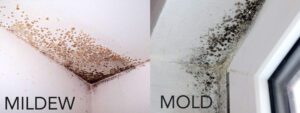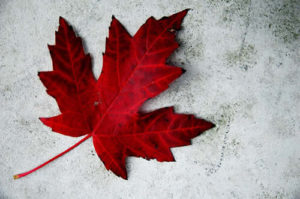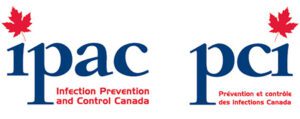Mold and Mildew in Toronto
 How to prevent Mold and Mildew in Toronto
How to prevent Mold and Mildew in Toronto
Today we’re going to talk about mold and mildew in Toronto and, although humidity levels are lower during our winters, there are conditions can make the inside of your home a breeding ground for mold and mildew. We’ll discuss what they are and how you can avoid it.
Got an awful case of off-season allergies, windowsills that appear to be growing a five o’clock shadow, or tiny-but-telltale spots of discoloration on your drywall?
If you live in a cold climate, kicking up the heater during winter months doesn’t just keep you warm—it also helps to create a perfect environment for winter mold and mildew.
Not only are fungal infestations unsightly, but they can cause allergic reactions such as sneezing, stuffy noses, and itchy eyes. And, in the case of mold, can spread relatively unnoticed, quietly compromising the integrity and strength of your very walls.
To save you the cost of expensive repairs and potentially poor health, we will discuss proven ways to prevent unwanted mold and mildew during winter. We will also look at how to find mold growth and what to do if you find it in your house.

Mold vs. Mildew: What’s the Difference?
Mold and mildew have a lot of similarities. They’re both likely to grow in moist, warm areas and are adept at surviving on a wide variety of surfaces.
Additionally, they’re both fungi that aren’t welcome in your home. Both can cause uncomfortable allergy symptoms. And, of course, their presence is an indicator that excess moisture is present. (We’ll get to the three factors that help mold and mildew to thrive shortly.)
Technically, mildew is a type of mold. The difference? Mildew sticks to growing on surface areas and is simple to wipe clean whereas mold can grow undetected for months – destroying the surfaces it thrives on.
Visually, there are some significant differences. Mildew is recognisable by its flat surface which stays relatively flush with whatever it’s growing on. It can appear downy or powdery in texture, and, while it may start out white, generally ends up yellow, brown, or black.
Mold, on the other hand, can be any of a wider range of colours including green, yellow, brown, gray, or white. Instead of growing relatively flush with a surface, it’s distinguished by a fluffy appearance.
And, depending on where it grows, spots may appear separately – as in not connected – but in the same area.
Discerning whether a patch of fungi is mold or mildew is important since their differences are way more than skin deep.

Food, Warmth, and Moisture: The Three Musts for Mold and Mildew
Not to gross you out, but microscopic mold and mildew spores are everywhere—even in the air we breathe. However, the risk of mold and mildew proliferation—or growth—increases once winter arrives due to the difference between indoor and outdoor temperatures.
That’s because fungi like mold and mildew require three things to thrive in your home: food, warmth, and moisture.
The “food” that mold and mildew require is any organic material (meaning that it contains carbon atoms) which can give it the energy to grow. This can be anything from the old bread on your kitchen counter to the cupboards on the walls, or even the cotton rug on your floor.
Warmth occurs when you crank up that aforementioned thermometer. But some areas that suffer from poor insulation, such as single-pane windows and outer-facing walls, can stay cooler than your home’s average temperature.
Moisture that travels into your home basement, bathrooms, or kitchen will condense when it comes in contact with a cold area. That’s why you’re most likely to find mold or mildew on windowsills, baseboards, tile grout, and even in the back of closets.
The good news is that if you don’t provide moisture, warmth, and food, mold simply can’t grow.
The bad news? While mildew might be easily defeated, depriving mold of its needs won’t kill the spores that are already there.
This means that even once mold stops growing, if the trifecta of moisture, warmth, and food is reintroduced, its dormant spores can spring back to life within hours of a favourable shift in environment.
So, the question is: How can you stay one step ahead of these microscopic particles?
 Six Ways to Prevent Mold and Mildew During Winter
Six Ways to Prevent Mold and Mildew During Winter
When all the right conditions are present, moisture, ample food, and a temperature between 8 Celsius and 38 Celsius, mold will begin growing within 24 to 48 hours.
However, this growth can often remain undetected until the spores have already affected large areas of your property and caused considerable structural damage.
That’s why the easiest way to beat these fungal culprits in the winter months is with prevention. Here’s how to limit moisture, remove tempting food sources, and keep an eye out for the first telltale signs of a winter mold problem.
1. Increase Air Circulation and Reduce Humidity
One cheap and simple step to reduce moisture is to use fans and open windows. By increasing the air circulation in rooms, cold air is less likely to condense in nooks and crannies.
However, because we live in a cold climate, opening windows might not be an option, depending on conditions. Instead, consider purchasing a dehumidifier to reduce the overall moisture inside your home. Here’s a link to another of our blog posts about the relationship between mold and relative humidity. It goes into significant detail on this relationship, https://mapleleafmold.ca/mold-relative-humidity/
Look for one that offers digital readings, which can help you to keep your indoor humidity level below 40 percent.
-
Keep an Eye Out for Leaks That Can Let in Excess Moisture
Watch for leaks in common areas such as windows, exterior-to-interior doorways, and the surrounding areas by swamp coolers and skylights.
Not only should you be on high alert for leaks coming from the outdoors, but don’t forget to check your indoor plumbing as a possible culprit for excess moisture. Check for hidden leaks in areas such as under bathroom and kitchen sinks.
-
Repair Any Leaky Area Immediately
Mold and mildew can grow at a rapid pace. The longer you leave a leak unattended, the more likely you are to experience mold and the damage that comes with it.
In short, the moment you suspect or see a leak, fix it–or you might be stuck with paying for more expensive mold remediation.
- Limit the Possible Areas Where Mold and Mildew Can Grow
Since fungi thrive on quick-to-decompose items such as books, piles of loose papers, or boxes of clothing, use strategy when storing these items.
The best areas for long-term storage are away from external walls or windows that invite condensation. Instead, pick an area that enjoys circulation to prevent the possibility of built-up moisture.
Remember to also keep a close eye on the moisture in your bathroom and clean surfaces regularly as well. After all, bathrooms can carry the most moisture in the home, which naturally results in the most mildew.
- Take Care to Keep Entryway Flooring Dry During Wet Weather
In rooms where moisture is a problem, area rugs and other washable floor surfaces are preferred over wall-to-wall carpet, if possible.
Do you live in a cool, wet climate? If so, these washable floor surfaces can be especially helpful in entryways (versus carpeting), where constantly tracking in moisture can quickly lead to mold growth.
In instances where you do have carpet up to the door and can’t do much about it (such as when renting), take care to vacuum the area regularly, inspecting for signs of any mold near the baseboards or where your carpet meets the wall.
-
Use Exhaust Fans in the Kitchen and Bathroom
Boiling water and taking steamy showers provide your home’s environment with plenty of moisture. Make sure not to slack when it comes to turning on exhaust fans, including the one in your oven’s hood, which can help reduce condensation formation.
It’s also helpful to leave exhaust fans on for twenty to thirty minutes after steaming up a room, along with wiping down moisture on the walls with a dry rag.
How to Find Suspected Mold Growth
We mentioned above that mildew is likely to appear in obvious places, including windowsills and bathroom caulking.
However, mold might not always be visible. Since mold doesn’t need light to thrive, it can grow within walls, behind molding, and in hidden corners throughout the home, often making it more difficult to discover.
One reason to suspect mold is if you can smell a strong, musty odor in an area of your home. If you find this is the case, try to pinpoint what area might be prone to water damage or condensation.
Again, kitchens and bathrooms, as well as areas around doors and windows, are the most susceptible, so make sure to check these areas for excessive moisture or mold growth.
What to Do If You Find Mold in Your House
Unless the growth is very minor, our research reveals that it’s probably best to hire a company like ours to remove it. That’s because, according to experts, natural cleaning solutions won’t do the trick with the exception of a disinfectant derived from a natural source such as Benefect. We only use botanical / plant based disinfectants when killing mold.
Even bleach is considered too weak to eradicate mold spores, and household cleaners will only disguise the smell while giving the mold time to grow. Bleach also contains water which defeats the purpose because you are adding what mold needs to grow in the first place.
Moldicide sprays are the only solution that can kill mold spores and the amount of chemical you’d need to remove mold can be equally hazardous to your health.
That’s why we suggest that only the smallest of affected areas should be handled by homeowners. If you do decide to try and kill mold yourself, be sure to wear protective goggles, gloves, and a respiratory mask before applying a moldicide spray to mold spots.
However, if mold has found its way into your HVAC system, appears in multiple areas on your walls, or you’re already experiencing symptoms of mold exposure, it’s time to call us in.
Doing so saves you the possible health risks associated with handling mold – not to mention they’ll make sure that there are no patches left behind – or that your home isn’t damaged during the exploration process.
How to Identify Trustworthy Mold Remediation Specialists
Mold remediation isn’t a task that can be handed off to any handyman. How to check that your potential contractor is a specialist before signing on the dotted line?
Your best bet is to hire a IICRC certified individual / company, like us, who have been trained and certified and have a AMRT and WRT designation. Why choose a certified IICRC company? Here’s a handy link that breaks down the benefits of doing so, https://mapleleafmold.ca/iicrc-certified-company/
And you’ve already found our website which is a great place to start. Besides this blog we also feature testimonials from previous customers, but please, check us out on Homestars as well online for independent reviews about the company.
Once you’ve researched these avenues we’d be glad to talk to you.
Bottom Line: It’s Easier to Prevent Mold Than to Remove It
When it comes to discovering mold, homeowners face somewhat of an uphill battle. Instead of brick and stone, modern building materials are porous and susceptible to mold growth.
Additionally, energy-efficient homes are made to be airtight while water pipes run inside walls while surrounded by insulation, creating a possible environment for mold. All these factors make detection difficult, so be sure to:
- Ensure good air circulation, including cracking windows, running exhaust fans, and minding that air ducts are kept free of dust and debris.
- Use a dehumidifier to reduce humidity levels to 40 percent.
- Inspect your home regularly to check that your roof system, foundation, plumbing, and HVAC systems are in good repair.
And remember, if you do find signs of mold, doing your research before hiring a specialist can save you money and headaches in the long run.

Maple Leaf Mold Inc. is a certified mold / asbestos removal and biological disinfection / air analysis company located in Toronto that uses certified IICRC technicians for all testing and remediation projects.
We are a professionally licensed firm experienced in testing, verifying and removing Mold / Asbestos / Lead and other environmental contaminants as well as providing disinfection services to control and kill biological contaminants.
Call 416-254-7256 to talk with us about your issue anytime.




 How to prevent Mold and Mildew in Toronto
How to prevent Mold and Mildew in Toronto